Selected Plants of Navajo Rangelands
Fremont cottonwood
T’iis
(a.k.a. Rio Grande cottonwood, Valley cottonwood)

Fremont cottonwood is a native tree growing in riparian areas near streams, rivers, and wetlands. Its height ranges from 40 to 115 feet, and trunk diameter ranges from 1 to 4 feet. The bark is smooth in younger trees, becoming deeply furrowed with whitish, cracked bark with age. The trees bloom from March to April. The wind-dispersed fruit is attached to silky hairs, which gives the appearance of patches of cotton hanging from the limbs, thus the name "cottonwood."
Cottonwood leaves have been used for soothing poultices. Its inner bark provides a source of Vitamin C. Cottonwood often grow from multiple large, spreading trunks.
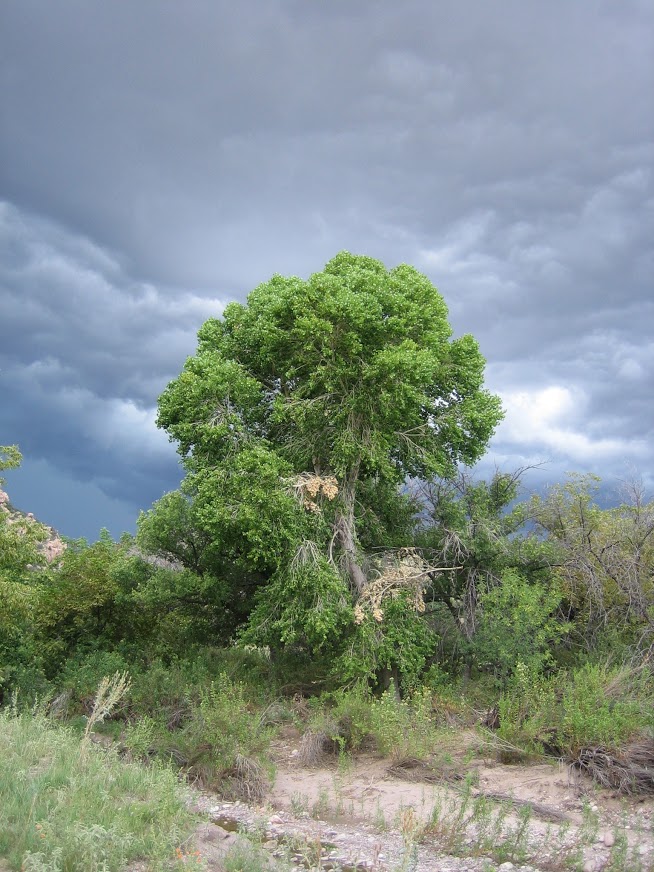
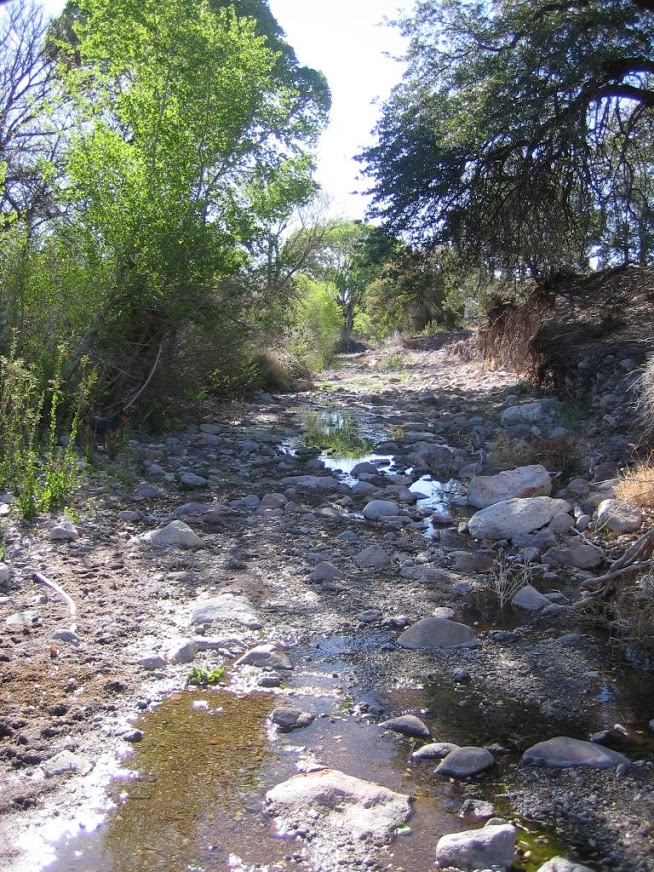
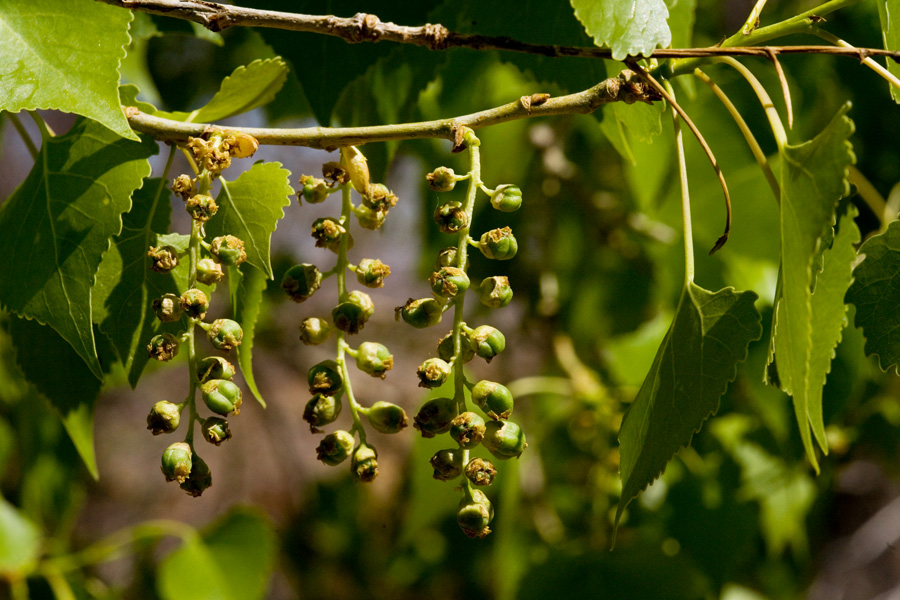
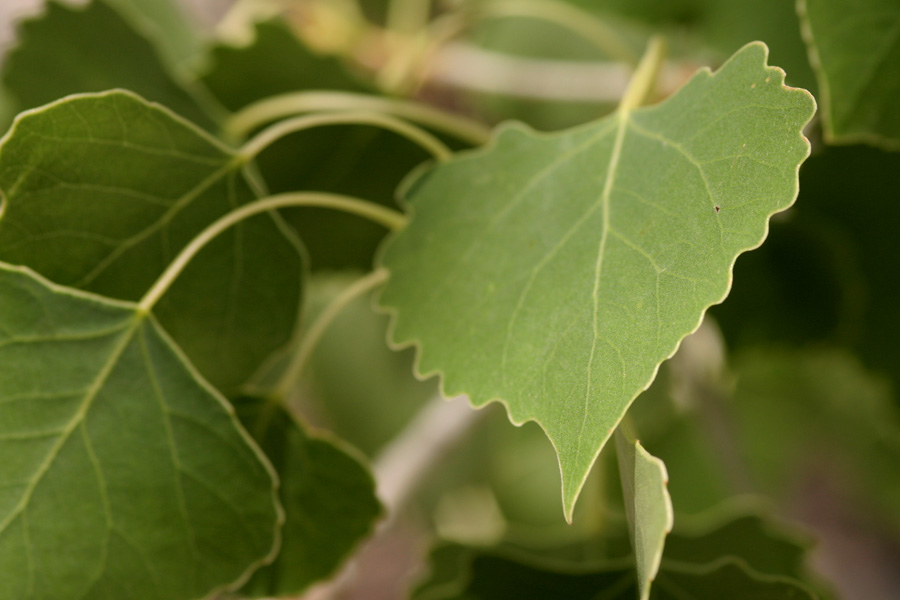
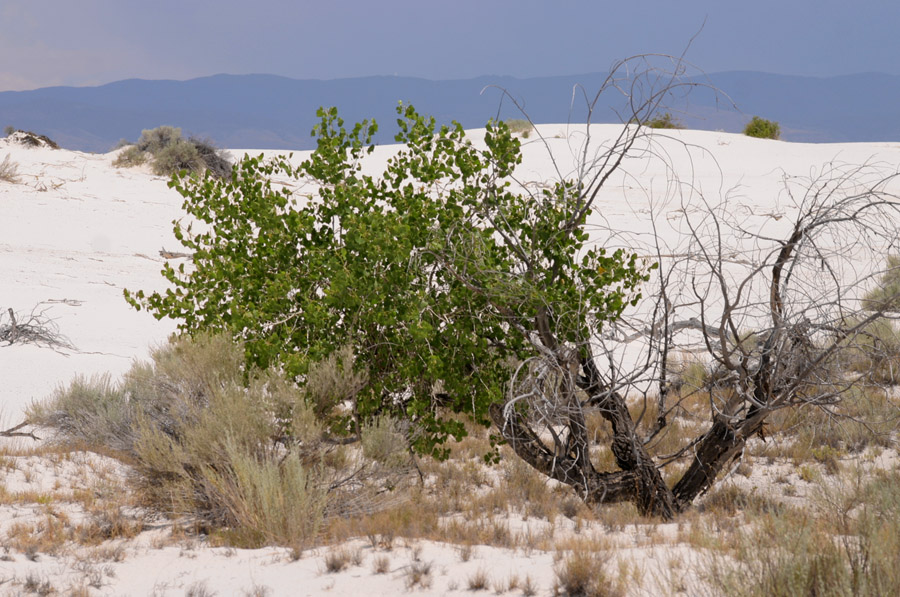
Copyright 2018 New Mexico State University. Individual photographers retain all rights to their images. Partially funded by the Western Sustainable Agriculture Research and Education Program (westernsare.org; 435.797.2257), project EW15-023. Programs and projects supported by Western SARE are equally open to all people. NMSU is an equal opportunity/affirmative action educator and employer..
NMSU does not discriminate on the basis of age, ancestry, color, disability, gender identity, genetic information, national origin, race, religion, retaliation, serious medical condition, sex (including pregnancy), sexual orientation, spousal affiliation or protected veteran status in its programs and activities as required by equal opportunity/affirmative action regulations and laws and university policy and rules. For more information please read the NMSU Notice of Non-discrimination (opens in new window).

